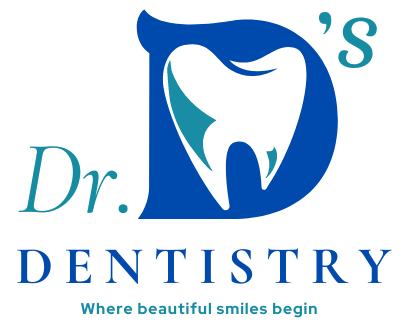Emerging Dental Technologies
Introduction
The field of dentistry has seen tremendous advancements over the years, evolving from traditional practices to the incorporation of cutting-edge technologies. As we move further into the 21st century, staying updated with the latest Emerging dental technologies isn’t just a matter of curiosity; it’s essential for both dental professionals and patients. These innovations are shaping the future of dental care, offering more efficient, effective, and personalized treatments.
The Rise of Digital Dentistry
Digital dentistry is at the forefront of this Emerging Dental Technologies revolution. But what exactly is digital dentistry? In simple terms, it refers to the use of digital or computer-based technology to carry out dental procedures. From digital X-rays to CAD/CAM (Computer-Aided Design and Computer-Aided Manufacturing) systems, digital tools are enhancing the precision and speed of dental treatments.
One of the most significant impacts of digital dentistry is its ability to streamline workflows in dental practices. With digital impressions and 3D imaging, the need for physical molds and time-consuming processes is greatly reduced. This not only saves time but also enhances the accuracy of diagnoses and treatments, leading to better patient outcomes.
3D Printing in Dentistry
3D printing has made significant strides in various industries, and dentistry is no exception. This Emerging Dental Technologies allows for the creation of precise dental appliances, including implants, crowns, and bridges, right in the dental office. Imagine a patient needing a crown; instead of waiting days for a lab to manufacture it, a dentist can now print a customized crown in a matter of hours.
Moreover, 3D printing is revolutionizing orthodontics by enabling the production of custom aligners and braces tailored to each patient’s unique dental structure. This level of customization not only improves the fit and comfort of the appliances but also shortens treatment times.
Teledentistry – Emerging Dental Technologies
In an era where convenience is key, teledentistry – Emerging Dental Technologies is breaking down barriers to access. Teledentistry refers to the remote delivery of dental services, including consultations, diagnosis, and patient education, through digital communication technologies. This innovation is particularly beneficial for patients in rural or underserved areas who may not have easy access to a dental clinic.
Teledentistry also allows dentists to monitor patients’ progress between visits, offer follow-up care, and provide guidance without the need for in-person appointments. This not only saves time for both the dentist and the patient but also helps in maintaining continuous care, leading to better long-term outcomes.
Laser Dentistry
Laser dentistry is another exciting advancement that is changing the way dental procedures are performed. Lasers can be used for a wide range of dental treatments, from cavity detection and gum reshaping to teeth whitening and even biopsy procedures.
The key advantage of laser dentistry is its minimally invasive nature. Lasers can precisely target areas for treatment, reducing the need for drills and minimizing discomfort. Patients benefit from quicker healing times, less bleeding, and a reduced risk of infection, making laser dentistry a preferred option for many procedures.
Artificial Intelligence in Dental Care
Artificial Intelligence (AI) is making waves in the healthcare industry, and dental care is no exception. AI algorithms are being used to analyze dental images, such as X-rays and intraoral scans, to assist in diagnosing conditions like cavities, gum disease, and even oral cancer.
AI-powered tools are also helping dentists create more accurate treatment plans by predicting the outcomes of various procedures based on data from previous cases. This level of precision and predictability is leading to more personalized care, ensuring that each patient receives the best possible treatment for their unique needs.
Augmented Reality (AR) in Dental Training and Education
Augmented Reality (AR) is transforming dental education by providing students and professionals with immersive learning experiences. Through AR, dental students can practice procedures in a virtual environment before performing them on actual patients. This hands-on experience is invaluable in building confidence and skill.
Beyond training, AR is also being used in patient communication. Dentists can use AR to show patients a visual representation of their dental issues and the proposed treatment plan. This not only enhances understanding but also helps patients make more informed decisions about their care.
Intraoral Scanners
Intraoral scanners are becoming increasingly popular in Unlocking the Future: Discover Top Emerging Dental Technologies practices due to their ability to capture highly accurate digital impressions of a patient’s mouth. Unlike traditional molds, which can be uncomfortable and imprecise, intraoral scanners provide a quick and painless alternative.
These scanners are used for a variety of purposes, including designing crowns, bridges, and orthodontic appliances. The digital models produced by intraoral scanners are incredibly accurate, leading to better-fitting dental restorations and more comfortable orthodontic devices.
Regenerative Dentistry
Regenerative dentistry is an emerging field that focuses on the body’s ability to heal and regenerate damaged tissues, including teeth. This innovative approach is heavily based on stem cell research, which holds the promise of growing new teeth or repairing damaged ones.
Scientists are exploring various ways to harness the power of stem cells to regenerate dental pulp, enamel, and even entire teeth. While still in the experimental stages, the potential for regenerative dentistry is immense, offering hope for patients with severe dental issues.
Robotics – Emerging Dental Technologies
Robotics is revolutionizing surgery across medical fields, and dentistry is no different. Robotic-assisted dental surgeries offer a level of precision that is difficult to achieve with human hands alone. These robots can assist with complex procedures, such as dental implants, by ensuring that each movement is meticulously controlled.
The benefits of robotic surgery include reduced recovery times, minimal scarring, and higher success rates. As Emerging Dental Technologies continues to advance, it’s likely that we’ll see even more applications in dental care, making procedures safer and more efficient.
Nanotechnology in Oral Health
Nanotechnology, the science of manipulating matter at the molecular level, is opening new frontiers in oral health. In dentistry, nanotechnology is being used to develop advanced materials for fillings, crowns, and other restorations that are more durable and biocompatible.
Additionally, nanotechnology is playing a role in preventive dentistry through the development of nanoparticles that can deliver targeted treatments to specific areas of the mouth. This could lead to more effective ways of preventing and treating conditions like cavities and gum disease.



